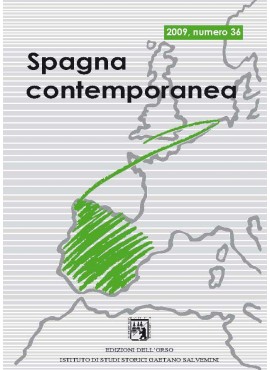Il Guernica conteso. Percezione, circolazione e ritorno di un dipinto che anche Franco avrebbe voluto
Keywords:
cultural policy, Transition, late Francoism, Guernica, Picasso, exile, reconciliation, democracyAbstract
The disputed Guernica. Perception, circulation and return of a painting that even Franco would have wanted
For Franco’s regime Picasso’s Guernica was a clear example of the work of a Communist «enemy of the Nation» who, just like vanguard art, was the initiator of «separatism» and «Masonic» depravation of modern art. Despite this, since the Fifties, the regime’s top leaders started to take increasing interest in the painting and sought various ways to bring it back to Spain: in 1968, with the consent of admiral Carrero Blanco and Franco himself, the request became official. This essay, by analyzing why the dictatorship wanted the Guernica back in a moment when Picasso and his art were the icon of anti-Francoist cultural resistance, identifies similarities and differences between the Francoist and the Transition cultural policy. On September 10th, 1981, after long negotiations, Guernica ended its exile and was exhibited in Museo del Prado’s Casón del Buen Retiro. The day after El País titled La Guerra ha terminado. Guernica turned from the object of governmental wish into a collective symbol of national pacification, consensus and democrati freedom. Thanks to the sources of Archivo General de la Administración and Dirección General de Relaciones Culturales, we point out changing perceptions as well as meanings of the controversial relationship between Picasso’s painting and the Spanish government in the delicate transition from dictatorship to democracy.
Received: 01-10-2008
Downloads
Published
Issue
Section
License
Copyright (c) 2009 Istituto di studi storici Gaetano Salvemini, Torino

This work is licensed under a Creative Commons Attribution-NonCommercial-NoDerivatives 4.0 International License.



